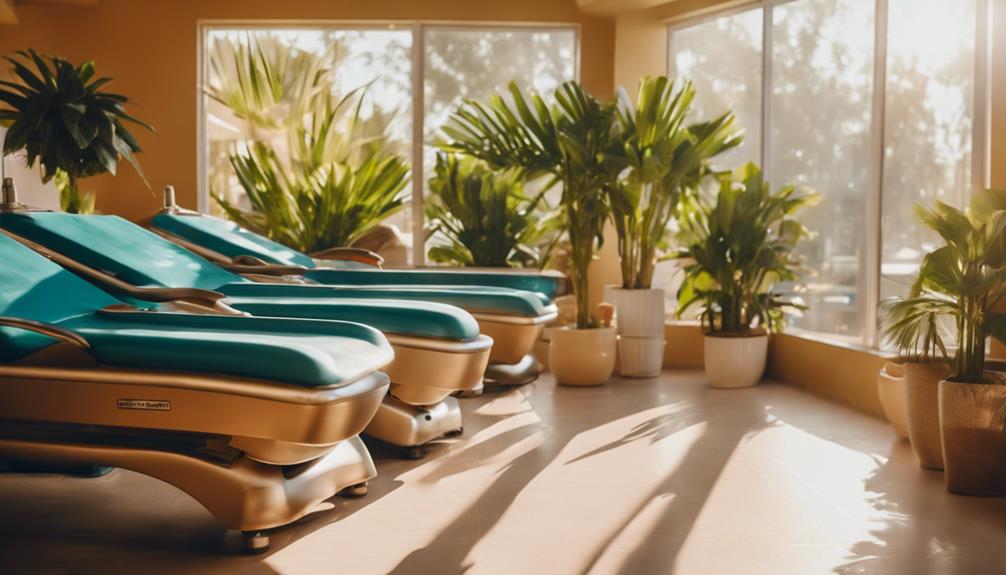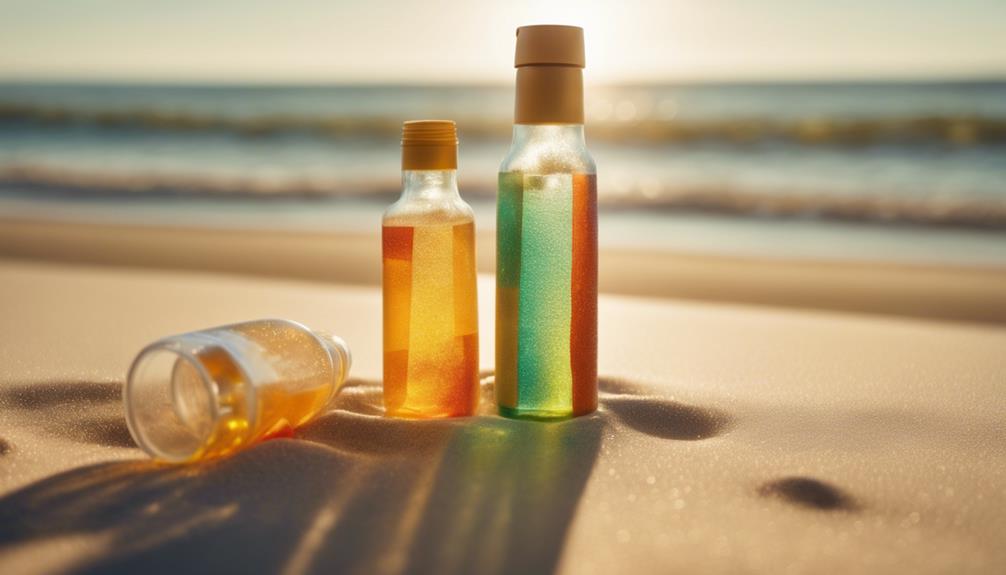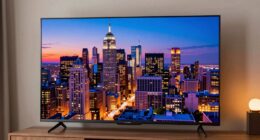Tanning beds might seem convenient for a bronzed glow, but they come with serious hidden dangers. UV radiation greatly raises your risk of skin cancers, particularly if you're under 30. Don't fall for the myth that a base tan protects you—there's no safe level of UV exposure. Protect your eyes with quality goggles and prioritize hygiene by cleaning the bed surfaces after every use. You should also prep your skin beforehand with exfoliation and moisturizer. If you want that sun-kissed look without the risks, consider safer alternatives. Stick around to discover more tips for achieving a beautiful tan safely.
Key Takeaways
- Tanning beds significantly increase the risk of skin cancer, especially in individuals under 30, with no safe level of UV exposure available.
- Proper eye protection, such as quality goggles, is essential to prevent UV-related eye damage, including cataracts and sunburn.
- Maintaining hygiene in tanning beds is crucial; disinfect surfaces after each use to prevent bacterial and fungal infections.
- Pre-tanning skin care, including exfoliation and moisturizing, enhances tanning results and minimizes skin irritation during sessions.
Tanning Bed Health Risks
Using tanning beds exposes you to harmful UV radiation, considerably increasing your risk of developing serious skin cancers like melanoma and basal cell carcinoma.
If you're under 30 and using these beds, your chances of skin cancer skyrocket. You might think a base tan offers some protection, but that's a myth; there's no safe UV exposure.
Each session can age your skin prematurely and increase your risk for squamous cell carcinoma as well. Skin cancer leads to around 2,000 deaths annually in the U.S., emphasizing the gravity of these risks.
The Truth About UV Radiation
Tanning beds emit high levels of UV radiation, posing serious risks to your skin and overall health.
These UV rays can damage your skin cells, increasing the likelihood of developing skin cancers like melanoma and basal cell carcinoma.
Even if you believe a base tan offers protection, it doesn't; there's no such thing as a safe UV tan.
Using tanning beds before age 30 greatly elevates your risk of skin cancer.
Furthermore, all UV exposure carries dangers, and tanning beds don't provide any benefits like preventing sunburn or aiding in vitamin D production.
Instead of risking your health, consider safer alternatives like self-tanners or spray tans that give you a bronzed look without the harmful effects of UV radiation.
Eye Safety Measures
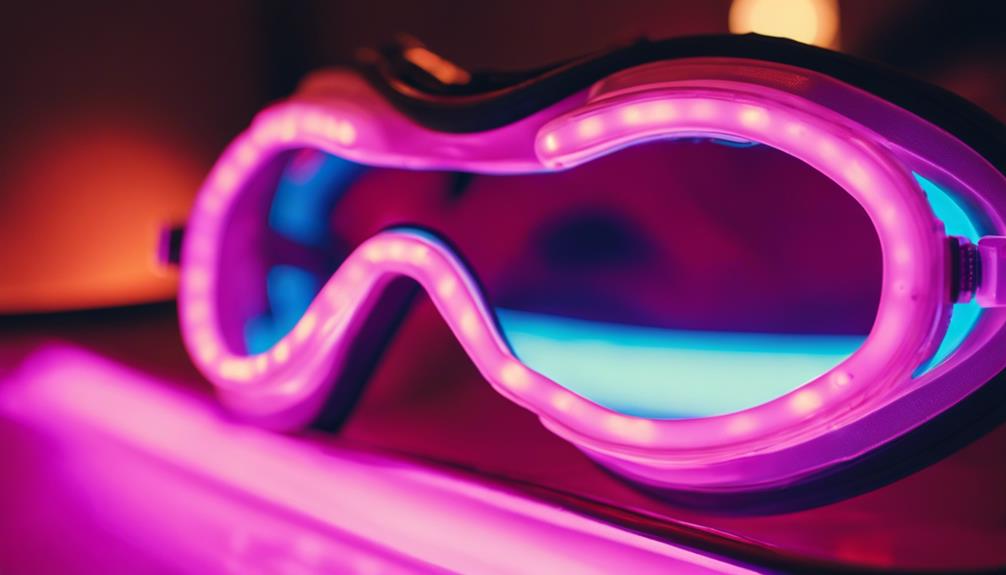
Protecting your eyes during tanning bed sessions is essential to prevent serious damage from harmful UV rays. Without proper eye protection, you risk developing cataracts, eye cancers, or experiencing painful sunburn on your eyes.
To guarantee your eye safety, follow these important measures:
- Use quality tanning goggles that block at least 99% of UV radiation.
- Confirm a secure fit to prevent any gaps where UV rays could enter.
Importance of Hygiene
Maintaining hygiene in tanning beds is vital for preventing the spread of bacteria and fungi that can lead to skin infections. After each use, you should thoroughly wipe down all surfaces with an EPA-approved disinfectant to eliminate harmful pathogens.
Don't forget to clean the face and body cushions, as these areas are often overlooked but can harbor germs. Regular deep cleaning at least once a month is important for thorough sanitization.
Always bring your own towel to cover the bed, and avoid tanning with wet or sweaty skin. By adopting these hygiene practices, you help guarantee a safer tanning experience, protecting both yourself and others who use the tanning bed.
Pre-Tanning Skin Care
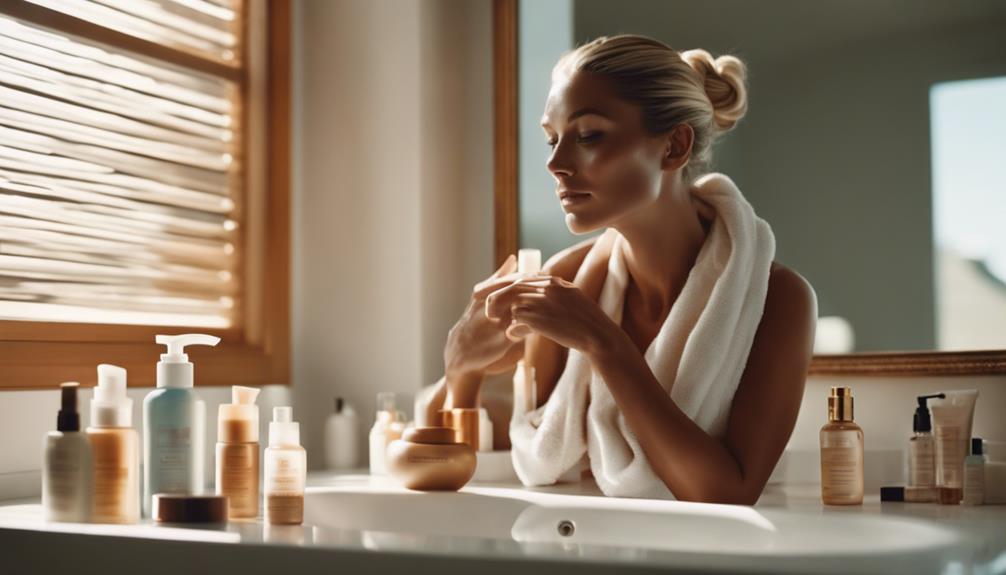
Prioritizing skin care before using a tanning bed can greatly enhance your tanning results and reduce the risk of skin irritation. Here's how to prepare your skin effectively:
Exfoliate: Gently exfoliate your skin 24 hours prior to tanning to remove dead skin cells and guarantee an even tan.
Moisturize: Apply a good moisturizer to keep your skin hydrated and prevent dryness, which can lead to uneven tanning.
Avoid Harsh Products: Stay away from products containing alcohol or fragrances, as they can irritate your skin and affect your tanning experience.
Essential Tanning Accessories
Having the right tanning accessories can greatly enhance your tanning experience and help achieve a flawless bronzed look.
First, invest in top-rated tanning bed goggles to protect your eyes from harmful UV rays. These should block at least 99% of UV radiation.
You'll also want effective tanning bed face covers to shield your skin from overexposure.
For ideal results, consider using bronzers and accelerators to deepen your tan and speed up the process.
After tanning, apply a quality after-tan moisturizer to keep your skin hydrated and prolong your glow.
Remember, proper preparation, like exfoliating and moisturizing beforehand, sets the stage for the best tanning results.
Equip yourself with these essentials for a safer and more effective tanning experience.
Safe Alternatives to Tanning Beds

Consider embracing safe alternatives to tanning beds that provide a beautiful bronzed look without the health risks associated with UV exposure. Here are a few options you can try:
- Self-tanning lotions or mousses: These products create a natural-looking tan without UV exposure. Just apply evenly for a sun-kissed glow.
- Spray tans: Professional spray tans offer a quick and even application, giving you a bronzed appearance in minutes, often lasting up to a week.
Frequently Asked Questions
Can I Tan Safely Without Using Tanning Beds?
Yes, you can tan safely without tanning beds. Consider using self-tanners or spray tans for a bronzed look without UV exposure. Always exfoliate and moisturize your skin beforehand for the best results and even color.
How Often Should I Use a Tanning Bed?
To maximize results, limit tanning bed use to once or twice a week. Too frequent sessions can lead to skin damage and increase cancer risk. Prioritize skin health while achieving that bronzed look you desire.
What Are the Signs of Skin Damage From Tanning?
You might notice signs of skin damage from tanning as redness, peeling, or dark spots. Over time, you could see increased dryness or wrinkles, which indicate your skin's suffering from UV exposure.
Are There Age Restrictions for Using Tanning Beds?
Yes, there are age restrictions for using tanning beds. Most states require users to be at least 18 years old, and some even prohibit anyone under 18 from using them. Always check local regulations for specifics.
How Can I Minimize Tan Lines While Using Tanning Beds?
To minimize tan lines while using tanning beds, you can rotate your body during sessions, adjust your positioning, and use tanning lotions designed to promote even color. Consistent exfoliation and moisturizing also help achieve smoother results.
Conclusion
To sum up, while you might think tanning beds offer a quick fix for that bronzed glow, the risks are far too great to ignore.
Don't let myths fool you into believing there's a safe way to tan.
Instead, consider sunless tanning options like lotions or sprays that give you a beautiful hue without the harmful UV exposure.
By prioritizing your skin health, you can achieve the look you want while keeping your skin safe for years to come.

